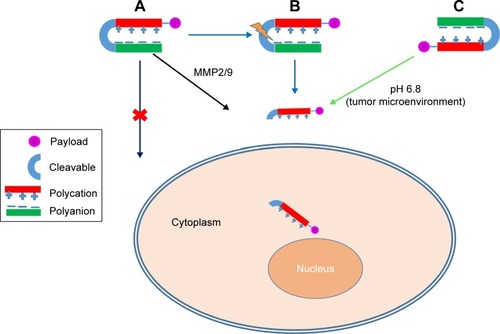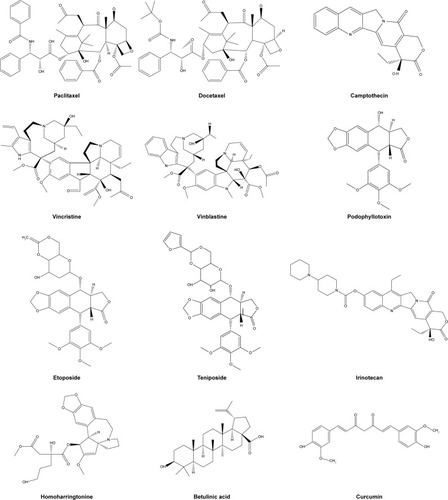Figures & data
Figure 1 Passive and active targeting of tumors.
Note: In passive targeting, drug-loaded NPs discriminately accumulate in tumor tissue due to leaky vasculature and poor lymphatic system, whereas active targeting involves the binding of ligand modified NPs to the receptor that are overexpressed on the cancer cells and directing cell membrane penetration using CPP.
Abbreviations: NPs, nanoparticles; CPP, cell-penetrating peptide; EPR, enhanced permeability and retention.

Figure 2 Activable cell-penetrating peptides (CPPs).
Note: Enzyme-activated CPP (A), photon-activated CPP (B), pH-activated CPP (C).

Table 1 Plant-derived anticancer agents in clinical use and clinical trials
Table 2 Examples of plant-derived anticancer drugs conjugated with peptides

